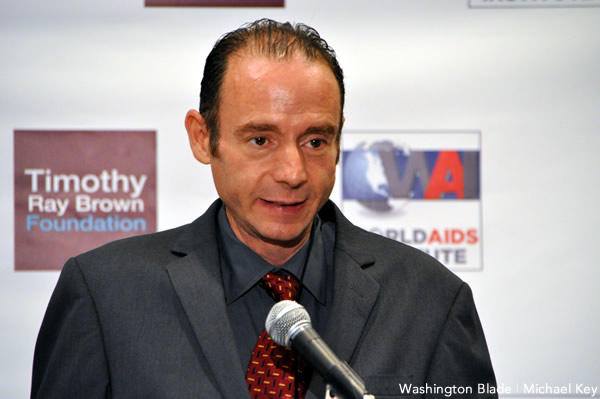The medical world has made tremendous advances in the search for the cure for HIV/Aids especially with the life saving antiretroviral drugs. But one man’s case stands different.
Timothy Ray Brown stand alone as the only one person effectively “cured” of HIV. The how and why of his success has been the subject of intense scrutiny for a decade.
Brown, sometimes referred to as “the Berlin patient,” received a bone-marrow transplant to treat his leukemia. But doctors discovered his donor had a rare mutation that made his immune cells much harder for HIV to enter. Now, even without a daily drug regimen, Brown’s viral load is undetectable.
Attempts to replicate this “miracle” have failed. (Some patients actually died shortly after receiving transplants.) To find someone with this cell mutation is rare enough, but the odds of them being a match to an HIV-positive patient—and willing to donate bone marrow—are astronomical.
“Ten years later, we still have no idea how Timothy Brown was actually functionally cured,” Jonah B. Sacha, a researcher at Oregon Health & Science University, said.
Even how Brown defeated the virus is debated: Scientists initially thought the donor was immune to HIV but
further evidence suggests it was an immune response in Brown triggered by the transplant that was responsible.
Earlier this year, IrsiCaixa AIDS Research Institute in Barcelona reported that six more HIV-positive patients saw their viral loads drop to undetectable levels after receiving bone-marrow transplants. All six developed graft-versus-host disease, though, which is when donor cells start attacking the patient.
Improving transplant outcomes could lead to them as a treatment for HIV. But to do that, says Sacha, “you really need an animal model that faithfully models what happens in humans.”
Rhesus monkeys have been used to test stem-cell transplantation before, but there are too many proteins in their immune systems, making the risk of rejection too high. In a new study, Sacha reported success with transplants in crab-eating macaques from Mauritius. A year after their transplants, the two recipient monkeys are alive and well—and showing no signs of rejection.
Mauritius macaques all descend from five monkeys left on the island by traders 500 years ago. Just one of those macaques was female, so they have a much less diverse gene pool and are easier to match. Improving bone-marrow transplantation could open up Brown’s success to others.
But Sacha, whose team published their findings last week in Nature Communications, isn’t chasing a cure for HIV. He says such a thing probably doesn’t exist: “Curing is just such a high bar. I think we’re going to be able to put people into drug-free remission He predicts we’re about ten years away from that.
Dr. Rowena Johnston of amFAR says, ultimately, “There may be different cures for different populations of HIV-infected people.”
A baby born in Mississippi in 2013 was effectively cured of HIV after being given an intense course of antiretrovirals within 30 hours of birth. The child, now a toddler, has been off antiretrovirals for a year with no signs of infection.
And in May, scientists at Temple University were able to eliminate the virus from mice transplanted with human immune cells. They edited HIV DNA out of the cells using a powerful gene editing technology known as CRISPR/Cas9.
The hope is human trials could begin as early as 2020.




